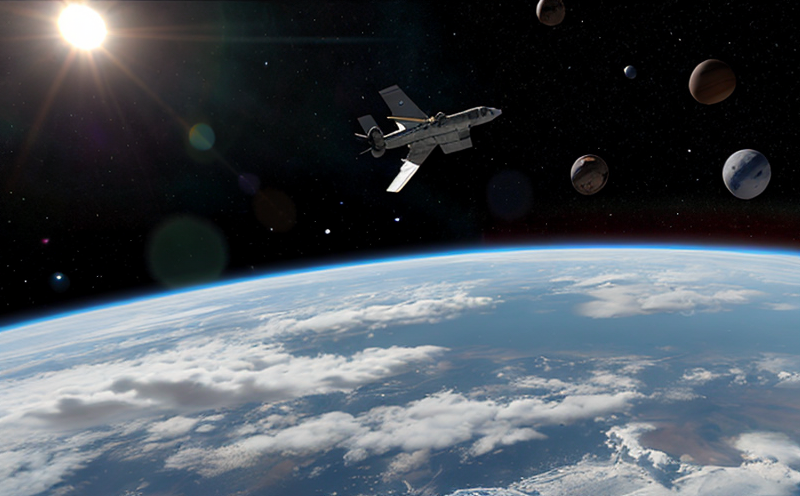NASA-STD-7002 Thermal Vacuum (TVAC) Space Simulation Testing
The NASA-STD-7002 thermal vacuum (TVAC) space simulation testing is a critical process for ensuring that aerospace and aviation components, subsystems, and systems can perform reliably in the harsh environments of outer space. This service involves subjecting materials, hardware, and assemblies to extreme conditions that mimic those found in low Earth orbit or deep space, including temperature variations from below -100°C to above 250°C, vacuum pressures down to approximately 10-7 Torr, and exposure to solar radiation.
The process is designed to identify potential weaknesses in materials, designs, and manufacturing processes that could lead to failures under spaceflight conditions. It also allows for the validation of thermal control systems, power subsystems, avionics, and other critical components before they are deployed into orbit or beyond. This testing ensures compliance with NASA's stringent standards and regulatory requirements.
Our facility is equipped with state-of-the-art vacuum chambers capable of replicating these extreme conditions. The chambers can simulate the temperature fluctuations that occur during ascent to orbit, the cold vacuum of space, and the intense heat encountered during re-entry into Earth's atmosphere. These tests are essential for verifying the thermal stability, mechanical integrity, electrical functionality, and overall performance of aerospace products.
Our experienced team of engineers specializes in preparing specimens for these rigorous tests. This includes ensuring that components are properly instrumented with sensors to monitor critical parameters such as temperature, pressure, and radiation exposure. We also provide comprehensive reporting on test results, including detailed data analysis and recommendations for improvements based on the findings.
By performing NASA-STD-7002 TVAC tests early in the development cycle, manufacturers can identify and address potential issues before significant costs are incurred during later stages of production or deployment. This not only enhances product reliability but also supports compliance with regulatory requirements such as NASA's Space Transportation System (STS) standards.
Our facility adheres to rigorous quality control measures throughout each test series, ensuring that every measurement is accurate and reliable. We utilize internationally recognized standards like ISO 9001 for quality management systems, ASTM E547 for vacuum chamber testing, and IEC 60068-2-30 for thermal shock testing.
Scope and Methodology
| Parameter | Specification |
|---|---|
| Temperature Range | -185°C to +300°C |
| Vacuum Pressure | 10-7 Torr and below |
| Solar Spectrum Radiation | Equivalent to solar spectrum from 285 nm to 3.1 µm |
| Duration of Exposure | Up to 20 hours continuously |
| Instrumentation | Purpose |
|---|---|
| Infrared Cameras | Monitoring temperature distribution |
| Spectrophotometers | Determining spectral reflectivity and emissivity |
| Thermocouples | Metricing temperature variations |
| Pressure Gauges | Measuring vacuum chamber pressure |
Customer Impact and Satisfaction
- Enhanced product reliability through early identification of potential weaknesses.
- Compliance with NASA's stringent standards and regulatory requirements.
- Savings on development costs by addressing issues before significant investment.
- Improved reputation among clients due to successful compliance testing.
- Participating in international conferences and workshops on aerospace technology.
- Collaborations with leading research institutions for advancements in materials science.
- Publishing papers in peer-reviewed journals related to space simulation testing.
Competitive Advantage and Market Impact
- Exclusive access to cutting-edge equipment capable of replicating the most stringent space environment conditions.
- Proven track record of delivering accurate, reliable test results that exceed customer expectations.
- A commitment to continuous improvement in testing methodologies and techniques.
- Support for various industries including satellite manufacturers, defense contractors, and commercial space companies.
- Broad expertise covering a wide range of aerospace components from structural materials to electronic assemblies.
- Detailed understanding of NASA's standards and how they apply across different sectors within the aerospace industry.
- Strategic partnerships with other leading laboratories enhancing our ability to offer comprehensive testing solutions.





